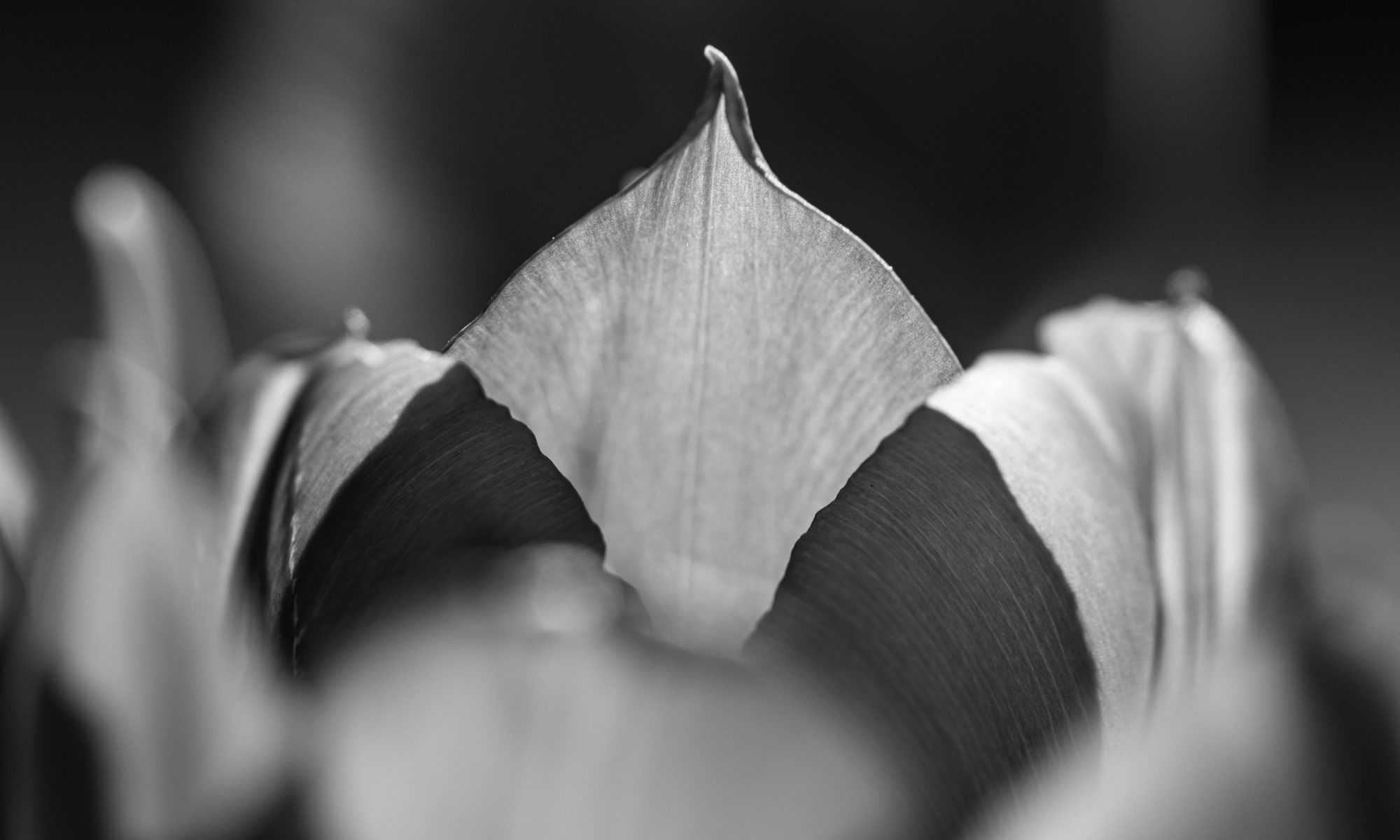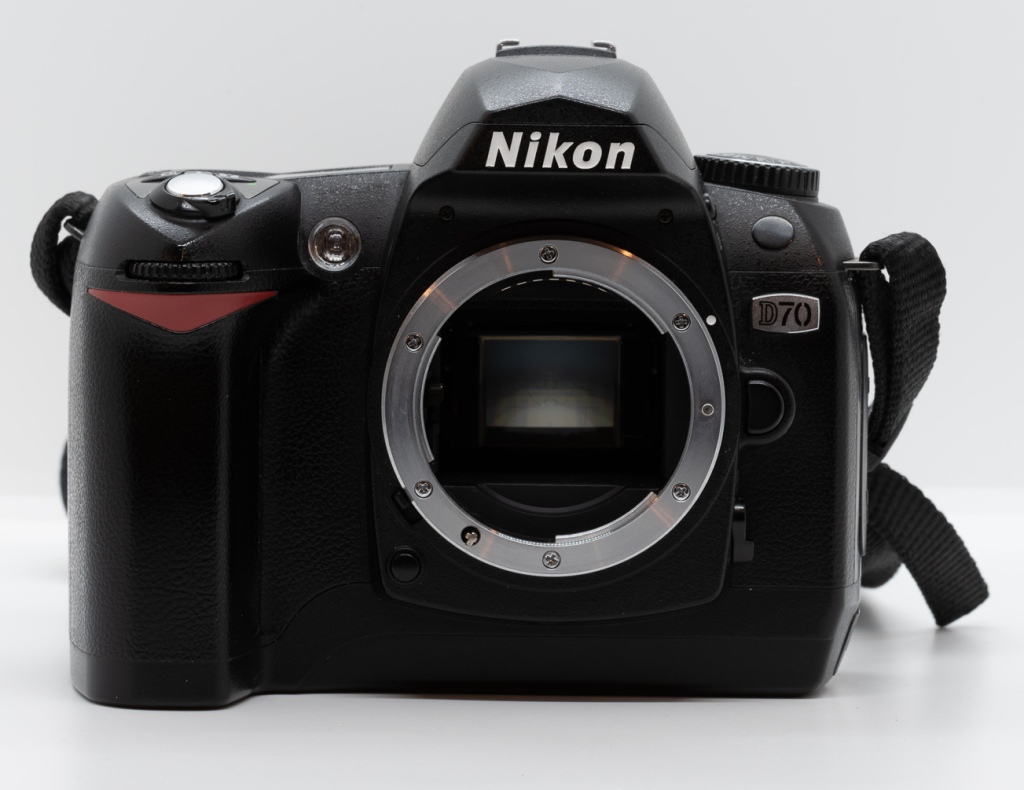My Nikon D2Xs represents what was Nikon’s high-end back in 2006. The D70 represents Nikon’s advanced amateur model from 2004. It sold for $999 (body only) and included a 6 MP CCD sensor (1.5x crop), ISO 200 – 1600 sensitivity, five selectable autofocus points, 3 fps continuous shooting, 1/8000 max shutter speed, a single CF card, and a 1.8″ display screen. It also includes an LCD display on top that shows photo settings.
I bought this camera because it’s a great comparison to my *ist DL They are both 6 MP cameras and use the same Sony sensor. The *ist DL was released a year later for nearly half the price but has terrible autofocus, few dedicated buttons, and a different library of lenses. Would the D70 have been a better choice? Let’s find out!
The D70 is about as far away from a D2X as one can get. It is mostly plastic, and while it still feels solid, it definitely feels, well, plastic. It weighs 1.5 lbs, which is half of a D2Xs. It’s chunkier than my D750 but lighter which makes it feel very hollow. It feels thick and huge compared to my *ist DL. While it isn’t nearly as customizable as a D2Xs or my D750, it still has plenty of dedicated buttons including bracketing, drive mode, ISO, white balance, image quality, metering mode, exposure compensation, and two control dials. Those put the most commonly used functions at easy reach instead of hiding them behind menus as on my *ist. It’s got several customizations that make it function close to my D750 (including control dial exposure compensation and viewfinder grid lines), but it still has a backwards exposure meter that I can’t change.
I find its chunkiness rather appealing actually. Though its design is an evolution of the D100 on which it is based, it still looks a lot like a film camera with digital guts jammed in. The screen looks like a postage stamp alone on the back of the camera. Many of the buttons are in a similar layout to my D750 but they are tiny, making them difficult to press with your eye to the viewfinder. The four-way selector is small and awkward to hit with my thumb to change the focus point. The CF Card slot takes up almost 20% of the back and limits button placement. It would be better mounted on the side like current Nikons. These things have been addressed in current cameras and the D70 shows where they came from.
In Use
The D70 feels very much like a current Nikon and it shoots like one too. The two control dials make aperture priority and exposure compensation easy to do, the viewfinder is bright, and the 5-point autofocus system works well enough. Autofocus is definitely faster than my *ist, even with comparable screw-mount lenses. The D70 can also use AF-S lenses with built-in focusing motors, something not available to my *ist. The dedicated buttons give it a leg up on the menu-driven nature of the *ist as well.
It has the same weird image review mechanic as the D2Xs where you need two button presses and a scroll of the command dial to zoom in on an image. It also has some advantages compared to my D750 – it has a higher max shutter speed (1/8000 vs 1/4000) and a higher flash sync speed (1/500 vs 1/250), which allows an extra stop of light reduction and flash use in super-bright daylight. Similar to other Nikons of this vintage, it does offer Auto ISO but only through a menu setting; it is not accessible via the ISO button as it is on my D750.
Image Quality
I shot most of the images RAW and they were comparable to the images taken with my *ist. Overall I like the images better but that is because I have access to a much larger and high quality lens library as well as an improved skill set. The kit lenses for my *ist are actually pretty sharp for kit lenses, but they are limited in terms of light capture. With better lenses, extra buttons and settings, and better autofocus, the D70 is certainly easier to make good images with.
Similar to the D2Xs, I find images of plants to be highly saturated even in RAW, and didn’t make many adjustments to them. The close-ups were done with my 90mm Macro, showing that the sensor can resolve pretty fine detail. Noise is reasonable through ISO 800 and gets grainy with noticeable banding at maximum ISO 1600. My D750 has less noise at ISO 12,800 but it’s a larger and much more advanced sensor. The image quality once again proves that it’s more about the photographer than the equipment.
Conclusion
So would the D70 have been a better camera for me back in 2005? Most definitely. The autofocus is much more advanced, the camera is much more customizable, and it has a much broader lens library that provides better autofocus and more options. Had I bought a D70 I probably wouldn’t have switched to Canon and would have upgraded to a D300 before eventually purchasing my D750.
That said, it probably wouldn’t have been the right camera for me at the time. First, it was more than twice the cost of my Pentax because I’d have to buy lenses. I already had wide angle and telephoto zooms for Pentax so I only purchased the *ist body; that was difficult enough on my college budget. In addition, I actually wanted a camera with simple controls and small size, so the D70 would have been huge and cumbersome in comparison. It was enough to get me to lug my tiny Pentax around; I think I would have been less likely to bring the D70 anywhere.
Once again, a fun trip back in time. While many of the digital parts have improved, the experience with a current DSLR is nearly the same as it is with the D70. Each generation improves image quality a bit, controls noise better, shoots a bit faster, autofocuses more quickly, and improves ergonomics, but functions essentially the same. There isn’t much I can do with my current camera that I couldn’t do with this one, it would just be a bit more difficult. I’ll keep this one around – who knows, maybe the boys will want to come out shooting with me some day.







































I’m a big fan of your Mac Museum youtube channel. You should make some more content for it if you can. I’d love to see some more macs. Maybe some iMacs, anything really. Even if you just revisited some of the old macs again, that’d be great.
LikeLike